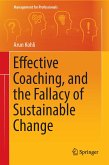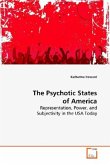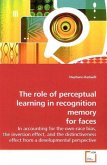In 1983 A. Tversky and D. Kahneman showed that
people sometimes tend to believe that a conjunction
of events (e.g., It rains and it is cold) is more
likely to occur than one of the events at stake
(e.g., It rains). This phenomenon is
called conjunction fallacy as it involves a
logical mistake. Researchers in psychology and
philosophy have engaged in important controversies
around the phenomenon. This work explores three of
these debates. First, it addresses the issue
of the nature of the conjunction fallacy. Is the
conjunction fallacy mainly due to a misunderstanding
of the problem by participants or is it mainly due
to a genuine reasoning bias? Second, it explores
empirical controversies about the factors that
elicit or help to avoid the fallacy. Third, it deals
with the impact of the conjunction fallacy studies
on the issue of human rationality. Does the fact
that most people commit the conjunction fallacy
imply that human beings are in some contexts
irrational? This book should help shed some light on
these debates and should be of interest of
psychologists, philosophers or anyone interested in
the tricks of the human mind.
people sometimes tend to believe that a conjunction
of events (e.g., It rains and it is cold) is more
likely to occur than one of the events at stake
(e.g., It rains). This phenomenon is
called conjunction fallacy as it involves a
logical mistake. Researchers in psychology and
philosophy have engaged in important controversies
around the phenomenon. This work explores three of
these debates. First, it addresses the issue
of the nature of the conjunction fallacy. Is the
conjunction fallacy mainly due to a misunderstanding
of the problem by participants or is it mainly due
to a genuine reasoning bias? Second, it explores
empirical controversies about the factors that
elicit or help to avoid the fallacy. Third, it deals
with the impact of the conjunction fallacy studies
on the issue of human rationality. Does the fact
that most people commit the conjunction fallacy
imply that human beings are in some contexts
irrational? This book should help shed some light on
these debates and should be of interest of
psychologists, philosophers or anyone interested in
the tricks of the human mind.








